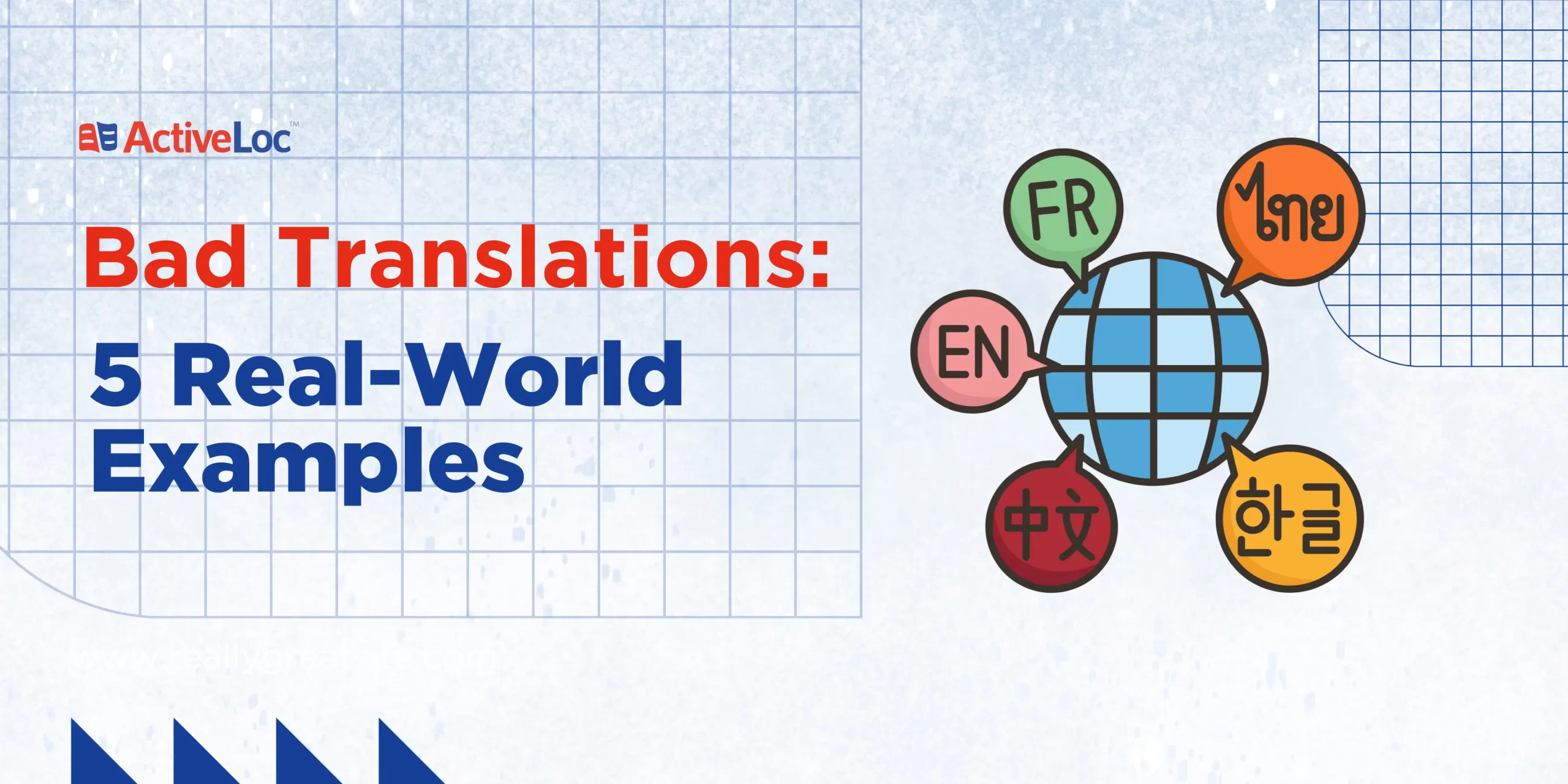Bad translations happen more often than most people realize: across marketing campaigns, product packaging, signs, menus, and even global brand launches. A single mistranslation can completely change meaning and lead to confusion, embarrassment, or even financial loss.
Below are real-world examples of bad translations, mistranslation mistakes, localization failures, and branding errors that became famous for all the wrong reasons.
Table of Contents
Togglefamous Bad Translation examples
You might think that with modern tools, these types of bad translations are a thing of the past. But as these five examples prove, even major corporations have fallen victim to marketing translation errors.
1. KFC’s “Finger-Lickin’ Good” in China
This is perhaps the most iconic example of a translation mistake in history. When KFC launched its famous slogan in China, they didn’t account for the direct translation of “Finger-Lickin’ Good” into Mandarin. The phrase came out as “Eat your fingers off.” While humorous to us now, this was a significant cultural blunder that made their product sound more menacing than delicious. It’s a classic case of why transcreation, adapting a message to cultural context, is essential.
2. Pepsi’s “Come Alive” in Taiwan
In the 1960s, Pepsi’s popular “Come Alive with the Pepsi Generation” campaign faced a serious problem in Taiwan. The brand’s slogan was literally translated to, “Pepsi will bring your ancestors back from the dead.” While the slogan aimed for a lively, youthful message, it hit a nerve by implying a link to spirits and the afterlife, a sensitive topic in many cultures. The brand had to quickly change its strategy to avoid this misstep, highlighting the need to understand cultural sensitivities.
3. Coors’ “Turn It Loose” in Spain
In its Spanish-language campaign, the beer company Coors translated its “Turn It Loose” slogan into “Suéltalo.” While this literally means “let it go” in a loose sense, in Spanish slang, it’s often interpreted as “suffer from diarrhea.” Clearly, this wasn’t the refreshing message Coors intended. It’s a perfect example of why relying on simple idioms and slang in translation can lead to major gaffes.
Need a partner to help you avoid these mistakes? Contact us to learn more about our professional translation and localization services.
4. Electrolux’s Vacuum Ad in the U.S.
When the Swedish vacuum company Electrolux launched a campaign in the U.S., they ran into trouble with their slogan: “Nothing Sucks Like an Electrolux.” While the word “sucks” in Swedish doesn’t carry the same negative connotation, in American English, it’s a common slang term for something being terrible. This unfortunate phrasing was a major turn-off for potential customers and serves as a powerful reminder of how a brand’s reputation can be damaged by a simple mistranslation.
5. Procter & Gamble’s Puffs Tissues in the UK
Procter & Gamble’s “Puffs” tissues were launched with a name meant to sound soft, friendly, and comforting. However, the brand overlooked how the word could be perceived in other English-speaking markets. In the UK, “puff” is an offensive slang term, giving the product name an unintended and negative connotation. This example underscores why even simple, seemingly harmless brand names should always undergo linguistic and cultural checks before international launches.
Some MORE Bad Localization and Mistranslation Examples
Why Bad Translations Happen and Why it Matters
While many bad translations seem funny, they highlight a serious issue: incorrect or poorly localized content can damage reputation, offend audiences, or create confusion, especially in regulated or enterprise markets. Common consequences of mistranslation include:
- Customer confusion
- Loss of trust or credibility
- Cultural or legal issues
- Brand reputation damage
- Product recalls or relaunch costs
Frequently Asked Questions
Translation is the process of converting text from one language to another, focusing on accuracy. Localization goes a step further by adapting the entire content—including idioms, cultural references, and images—to fit a specific region or market. Localization ensures the message resonates culturally and emotionally with the target audience.
Literal translations fail because they ignore the context, cultural nuances, and idiomatic expressions that are fundamental to a language. A word-for-word approach can lead to phrases that are grammatically correct but nonsensical, offensive, or confusing in the target language.
Yes. Examples include Chevrolet’s “Nova” in Spanish, which sounds like “no va” (“it doesn’t go”), or the brand PEE in the Middle East, a term that has a negative connotation in some languages. These mistakes show the importance of cultural vetting for product names as well as slogans.
Small businesses should prioritize working with professional translators who are native speakers of the target language. Instead of relying on automated tools or amateur translators, investing in a reputable translation service ensures that your content is culturally sensitive and effective from the start.
Machine translation tools can be useful for getting a general gist of a text or for casual, non-business communication. However, they are not suitable for professional use like marketing, legal documents, or medical content, where accuracy and nuance are critical. For business, always opt for professional human translation.
Don’t risk a translation mistake. Get started with a professional today.

